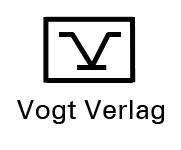Details
| Autor: | Nicola Michailow |
| Titel: | Generalized Frequency Division Multiplexing Transceiver Principles |
| Typ: | Dissertation |
| Fachgebiet: | Informationstechnik |
| Reihe: | Mobile Nachrichtenübertragung, Nr.: 77 |
| Auflage: | 1 |
| Sprache: | Englisch |
| Erscheinungsdatum: | 22.10.2015 |
| Lieferstatus: | lieferbar |
| Umfang: | 140 Seiten |
| Bindung: | Soft |
| Preis: | 49,00 EUR |
| ISBN: | 9783938860946 |
| Umschlag: | (vorn) |
| Inhaltsverzeichnis: | (pdf) |
Abstrakt in Englisch
Despite the great success of orthogonal modulation schemes in state-of-the-art communication systems, their lack of flexibility is prohibitive for application in future 5G cellular systems. In 2009, the initial concept of a novel modulation scheme named generalized frequency division multiplexing (GFDM) was proposed. It represents a new perspective on filtered multicarrier transmission with more degrees of freedom than classical OFDM or SC-FDE transmission and is capable to address the specific requirements of 5G application scenarios. This work develops the foundations of GFDM modulation and demodulation and analyzes how characteristic parameters influence the properties of the waveform.
The first part of this work explores the basic GFDM transmitter and receiver. For this purpose, the terminology around the block structure of GFDM is clarified and based on these definitions, the GFDM baseband processing, i.e. signal generation and matched filter reception, is described from multiple perspectives, including a low complexity model. The bit error rate performance is analyzed for multiple channel conditions, analytically and through simulations.
The second part of this work treats enhanced receiver structures. The linear zero forcing and minumum mean squared error receiver are derived for GFDM and their error rate performance is evaluated. Subsequently, two non-linear receivers are developed. A matched filter in combination with successive interference cancellation as well as an adaptive minumum mean squared error structure are analyzed in terms of bit error rates. Moreover, GFDM is considered in combination with channel coding for different channel conditions. Lastly, based on the number of complex valued multiplications required for an implementation, the computational complexity of the different transmitter and receiver algorithms is compared.
The third part of this work focuses on engineering the GFDM waveform according to specific requirments. This analysis starts with an investigation of the spectral properties in dependence of the various available degrees of freedom. The focus is then shifted to multi-user interference and multi-system coexistence, particularly in the case of frequency misalignment. The peak-to-average power ratio of GFDM is analyzed for multicarrier and single-carrier configurations. The work is concluded by the derivation of specific sets of parameters for the GFDM waveform that enable to address envisioned 5G application scenarios.


